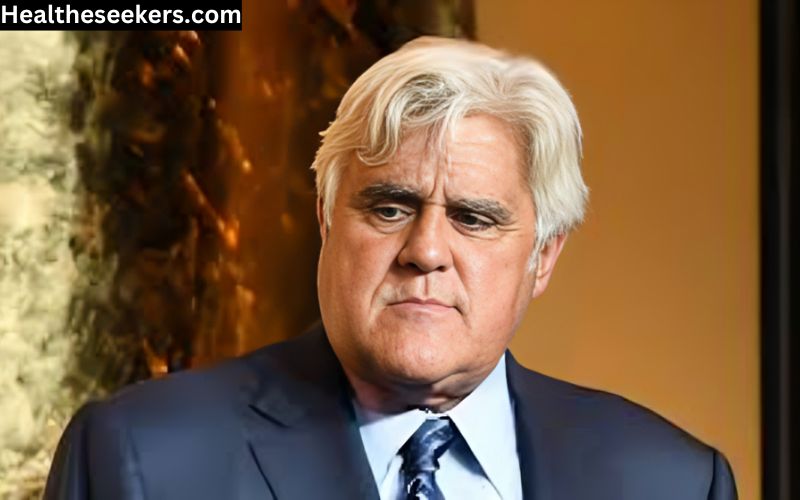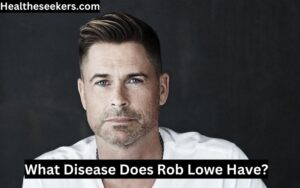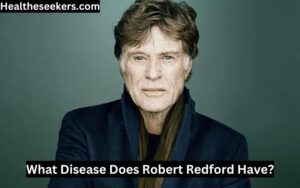Jay Leno, the iconic comedian and former host of “The Tonight Show,” has been a fixture in American entertainment for decades. Known for his quick wit, extensive car collection, and relentless work ethic, Leno’s public persona is larger than life. However, behind the scenes, he has faced a significant health challenge that has garnered considerable attention: skin cancer. In this article, we delve into Jay Leno’s battle with skin cancer, exploring the nature of the disease, its implications, and the broader context of his health journey.
Understanding Skin Cancer
Skin cancer is one of the most common types of cancer, with millions of cases diagnosed worldwide each year. It primarily arises from the skin’s outer layer, known as the epidermis. There are three main types of skin cancer:
- Basal Cell Carcinoma (BCC): The most common and least dangerous form, BCC originates in the basal cells of the epidermis. It usually manifests as a small, shiny bump or nodule and is often treated successfully with surgery.
- Squamous Cell Carcinoma (SCC): This type begins in the squamous cells, which are found in the upper layers of the skin. SCC may present as a red, scaly patch or a sore that doesn’t heal. While it can be more aggressive than BCC, it is still highly treatable when detected early.
- Melanoma: The most serious form of skin cancer, melanoma originates in the melanocytes, the cells responsible for pigment in the skin. Melanoma often appears as a new or changing mole or spot, and it can spread to other parts of the body if not treated promptly.
Jay Leno’s Diagnosis
In January 2023, Jay Leno publicly disclosed that he had been diagnosed with a rare and aggressive form of skin cancer. This news came as a shock to many of his fans, given Leno’s robust public image and his reputation for being exceptionally active and energetic.
Leno revealed that he had been undergoing treatment for what was described as “severe” skin cancer. His specific diagnosis included multiple skin cancers, including basal cell carcinoma and a more aggressive form that required extensive medical intervention. The type of skin cancer Leno faced was particularly concerning due to its potential for spreading and causing significant health complications if left untreated.

The Nature of Jay Leno’s Skin Cancer
Jay Leno’s skin cancer diagnosis highlighted several key aspects of the disease:
- Severity and Aggressiveness: While basal cell carcinoma is generally less aggressive, Leno’s case included aggressive skin cancers that necessitated comprehensive treatment strategies. Melanoma, in particular, is known for its ability to metastasize, making it a serious concern.
- Treatment and Management: Leno’s treatment involved a combination of surgical procedures and potentially other therapies such as radiation or chemotherapy, depending on the spread and nature of the cancer. Mohs surgery, a specialized technique used to remove skin cancer layer by layer, was among the treatments used to ensure complete removal of cancerous cells while preserving as much healthy skin as possible.
- Recovery and Prognosis: The prognosis for skin cancer varies widely depending on the type and stage of the disease. Early detection typically leads to a high cure rate, but more advanced cases require intensive treatment and monitoring. Jay Leno’s recovery has been marked by ongoing medical care and regular follow-ups to ensure the cancer does not recur.
Impact on Jay Leno’s Life and Career
Jay Leno’s diagnosis had a profound impact on both his personal life and his professional career:
- Personal Life: Dealing with a serious health condition can be emotionally and physically taxing. For Leno, this meant confronting the realities of his health while maintaining his usual public persona. The support from his family, friends, and fans played a crucial role in his coping process.
- Public Appearances: Leno’s health challenges led to a temporary reduction in his public appearances. While he continued to engage with his audience through various media, there was a noticeable shift as he focused on his treatment and recovery.
- Advocacy and Awareness: Leno’s high-profile battle with skin cancer brought increased attention to the importance of skin cancer awareness and prevention. By sharing his experience, he contributed to greater public understanding of the disease and the need for regular skin checks and sun protection.
Prevention and Early Detection
Jay Leno’s case underscores the critical importance of skin cancer prevention and early detection. Key strategies include:
- Regular Skin Examinations: Regular check-ups with a dermatologist can help detect skin cancer early, particularly for individuals with a history of sun exposure or a family history of skin cancer.
- Sun Protection: Using sunscreen with high SPF, wearing protective clothing, and avoiding excessive sun exposure are essential measures to reduce the risk of skin cancer.
- Self-Examination: Performing regular self-examinations of the skin for any new or changing moles or spots can help in early detection. Any concerning changes should be promptly evaluated by a healthcare professional.
- Education and Awareness: Public awareness campaigns and educational initiatives play a crucial role in informing people about the risks of skin cancer and the importance of preventive measures.
What type of skin cancer did Jay Leno have?
Jay Leno was diagnosed with a combination of skin cancers, including basal cell carcinoma (BCC) and a more aggressive form. BCC is the most common type of skin cancer and usually grows slowly, rarely spreading to other parts of the body. However, Leno’s case also included more severe and aggressive forms of skin cancer, which required extensive treatment. These aggressive forms could potentially involve squamous cell carcinoma (SCC) or melanoma, though specific details about the exact types of cancer beyond basal cell carcinoma were not always publicly detailed. Melanoma, in particular, is known for its potential to spread rapidly, making early detection and treatment crucial.
Why was Jay Leno’s case considered severe?
Leno’s case was considered severe due to the presence of multiple skin cancers and the need for comprehensive treatment. While basal cell carcinoma is generally less dangerous compared to other skin cancers, having multiple instances or more aggressive forms can increase the complexity of treatment and monitoring. Aggressive types of skin cancer can have a higher risk of metastasis, which necessitates prompt and effective intervention to prevent further health complications.
What treatments did Jay Leno undergo for his skin cancer?
Jay Leno’s treatment for skin cancer involved a multifaceted approach. The primary treatment method included Mohs micrographic surgery, a technique that involves removing cancerous skin layer by layer and examining it microscopically to ensure all cancer cells are eradicated while preserving as much healthy tissue as possible. This approach is often used for basal cell carcinoma and squamous cell carcinoma to achieve precise removal.
In addition to Mohs surgery, Leno may have received other treatments depending on the type and extent of his skin cancer. These could include radiation therapy, which uses high-energy rays to target and kill cancer cells, or chemotherapy, which involves drugs that can kill cancer cells or stop them from growing. For melanoma or more advanced cases, targeted therapy or immunotherapy might also be considered to enhance the body’s natural defenses against cancer.
How long did Jay Leno’s treatment last, and what was the recovery process like?
The duration of Jay Leno’s treatment varied depending on the complexity and extent of the cancer. Mohs surgery, for instance, can involve multiple sessions if the cancer is extensive. Post-surgery, recovery typically includes wound healing and ongoing monitoring to ensure that the cancer has not recurred. The recovery process also involves regular follow-up visits to check for any signs of cancer returning and to address any side effects from the treatment. The exact length of Leno’s recovery period was not specified, but it likely involved a combination of medical appointments and personal care to ensure optimal healing.
How did Jay Leno’s skin cancer diagnosis impact his public life and career?
Jay Leno’s diagnosis with skin cancer had a noticeable impact on his public life and career. Following the diagnosis, Leno reduced his public appearances to focus on his treatment and recovery. Known for his high-profile career and frequent public engagements, including hosting and performing, this reduction marked a significant shift in his usual routine.
The impact was evident in several ways:
- Temporary Withdrawal: Leno took a step back from his regular activities, including his television appearances and live performances, to concentrate on his health.
- Increased Privacy: During his treatment, Leno maintained a degree of privacy regarding his health updates, only sharing details as he deemed appropriate.
- Public Support: The public’s reaction to his diagnosis included an outpouring of support from fans and colleagues. Leno’s openness about his condition raised awareness about skin cancer, prompting discussions about prevention and treatment.
Did Jay Leno use his diagnosis to raise awareness about skin cancer?
Yes, Jay Leno’s diagnosis and subsequent public statements significantly contributed to raising awareness about skin cancer. By openly discussing his health struggles, he highlighted the importance of early detection and preventive measures. His situation brought attention to the need for regular skin checks and sun protection, encouraging others to be proactive about their skin health. Leno’s role in publicizing his condition underscored the importance of education and awareness in the fight against skin cancer.
What preventive measures can people take to reduce the risk of skin cancer?
Preventing skin cancer involves a combination of lifestyle choices and regular health practices. Here are key preventive measures:
- Use Sunscreen: Apply a broad-spectrum sunscreen with at least SPF 30 to all exposed skin, even on cloudy days or when indoors near windows. Reapply every two hours and after swimming or sweating.
- Wear Protective Clothing: Choose clothing that covers the skin, including hats with brims and sunglasses with UV protection. Specially designed UV-protective clothing can also provide an extra layer of defense.
- Avoid Peak Sun Hours: Limit sun exposure between 10 a.m. and 4 p.m., when UV radiation is strongest. Seek shade when possible and avoid tanning beds.
- Perform Regular Skin Checks: Regularly examine your skin for any new or changing moles, spots, or growths. Look for changes in color, shape, or size, and consult a dermatologist if any concerning signs are detected.
- Get Professional Skin Examinations: Schedule regular skin check-ups with a dermatologist, particularly if you have a history of sunburns, excessive sun exposure, or a family history of skin cancer.
- Educate Yourself: Stay informed about skin cancer risks and prevention strategies. Awareness and education play crucial roles in early detection and effective prevention.
How important is it to follow up with a dermatologist if a suspicious spot is found?
A: Following up with a dermatologist is crucial if you find a suspicious spot on your skin. Dermatologists are trained to assess and diagnose skin conditions accurately. Early evaluation and diagnosis can lead to timely treatment, which is essential for effective management and better outcomes. Prompt medical attention can significantly improve the chances of successful treatment and reduce the risk of skin cancer progressing or spreading. Regular check-ups and consultations with a dermatologist also help in maintaining skin health and addressing any potential issues before they become serious.
See Also: What Disease Do Armadillos Carry? An In-Depth Exploration
Conclusion
Jay Leno’s battle with skin cancer highlights the significant challenges that even the most seemingly invincible public figures can face. His experience serves as a powerful reminder of the importance of vigilance when it comes to skin health and the need for continued advocacy and education about skin cancer prevention and treatment.
As Jay Leno continues his recovery, his story offers hope and inspiration to others dealing with similar health challenges. By sharing his journey, Leno not only raises awareness about skin cancer but also encourages others to take proactive steps in managing their health.
In the face of adversity, Jay Leno’s resilience and determination stand as a testament to his strength and character. His ongoing journey through recovery and his commitment to public health education remain vital components of his legacy, demonstrating that even in the realm of entertainment, personal health and well-being are of paramount importance.




